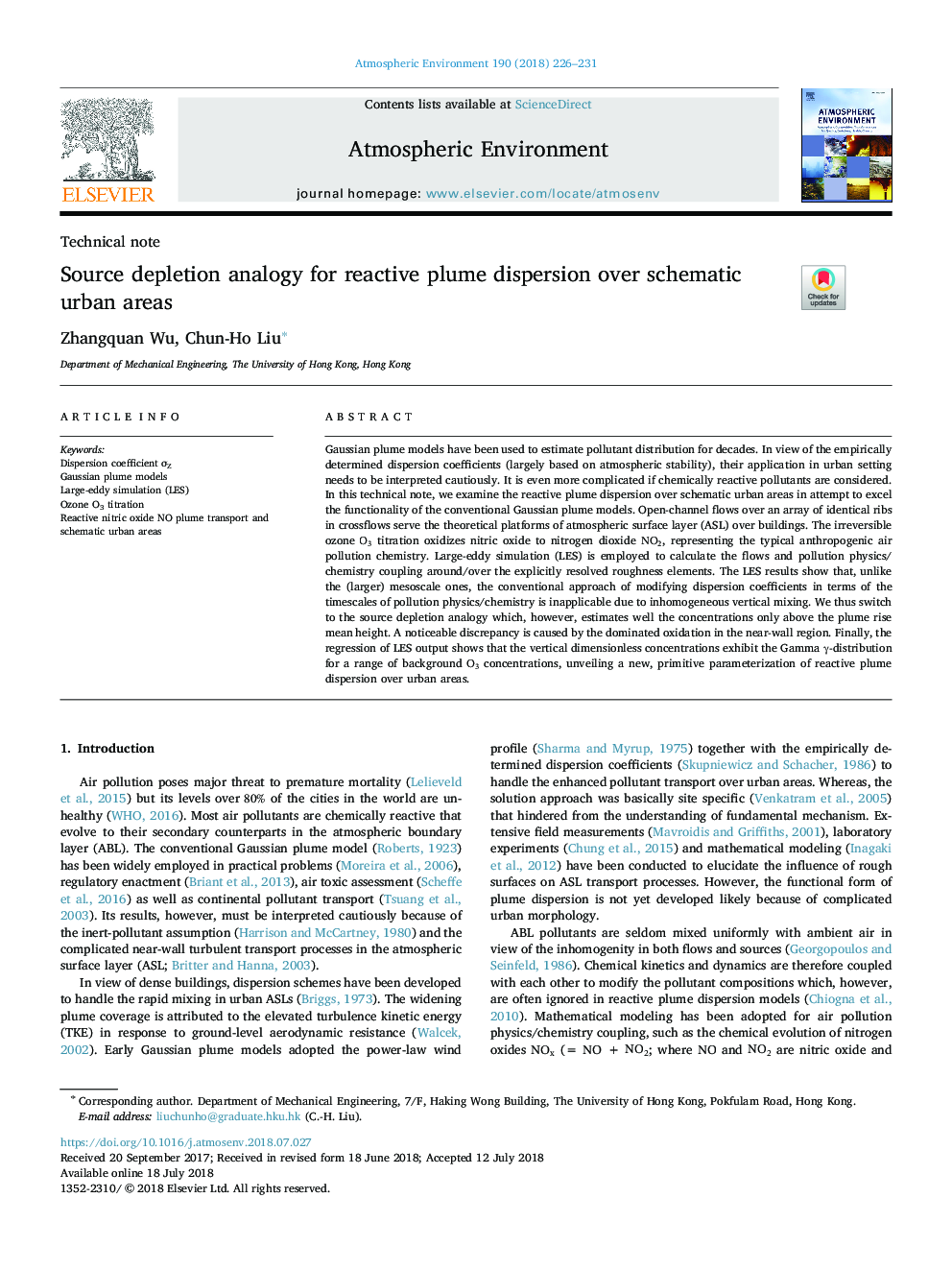| Article ID | Journal | Published Year | Pages | File Type |
|---|---|---|---|---|
| 8863516 | Atmospheric Environment | 2018 | 6 Pages |
Abstract
Gaussian plume models have been used to estimate pollutant distribution for decades. In view of the empirically determined dispersion coefficients (largely based on atmospheric stability), their application in urban setting needs to be interpreted cautiously. It is even more complicated if chemically reactive pollutants are considered. In this technical note, we examine the reactive plume dispersion over schematic urban areas in attempt to excel the functionality of the conventional Gaussian plume models. Open-channel flows over an array of identical ribs in crossflows serve the theoretical platforms of atmospheric surface layer (ASL) over buildings. The irreversible ozone O3 titration oxidizes nitric oxide NO to nitrogen dioxide NO2, representing the typical anthropogenic air pollution chemistry. Large-eddy simulation (LES) is employed to calculate the flows and pollution physics/chemistry coupling around/over the explicitly resolved roughness elements. The LES results show that, unlike the (larger) mesoscale ones, the conventional approach of modifying dispersion coefficients in terms of the timescales of pollution physics/chemistry is inapplicable due to inhomogeneous vertical mixing. We thus switch to the source depletion analogy which, however, estimates well the NO concentrations only above the plume rise mean height. A noticeable discrepancy is caused by the dominated NO oxidation in the near-wall region. Finally, the regression of LES output shows that the vertical dimensionless NO concentrations exhibit the Gamma γ-distribution for a range of background O3 concentrations, unveiling a new, primitive parameterization of reactive plume dispersion over urban areas.
Related Topics
Physical Sciences and Engineering
Earth and Planetary Sciences
Atmospheric Science
Authors
Zhangquan Wu, Chun-Ho Liu,
